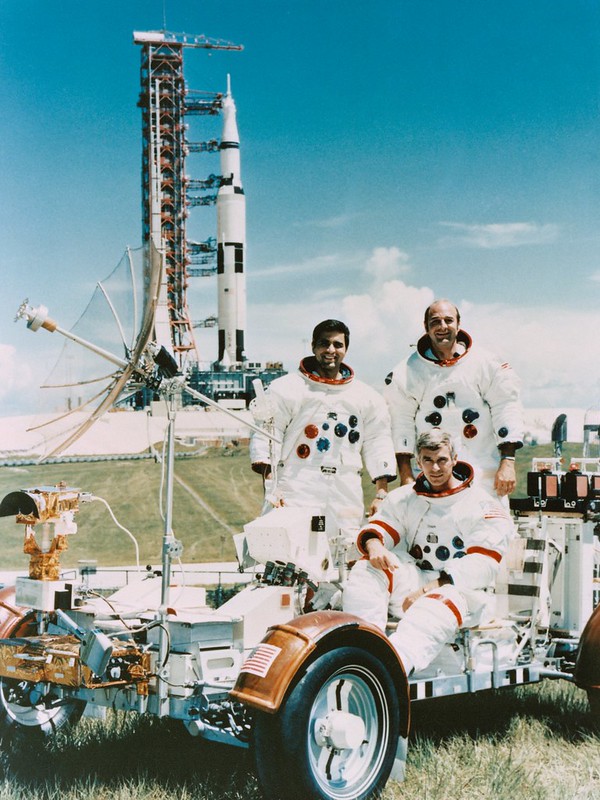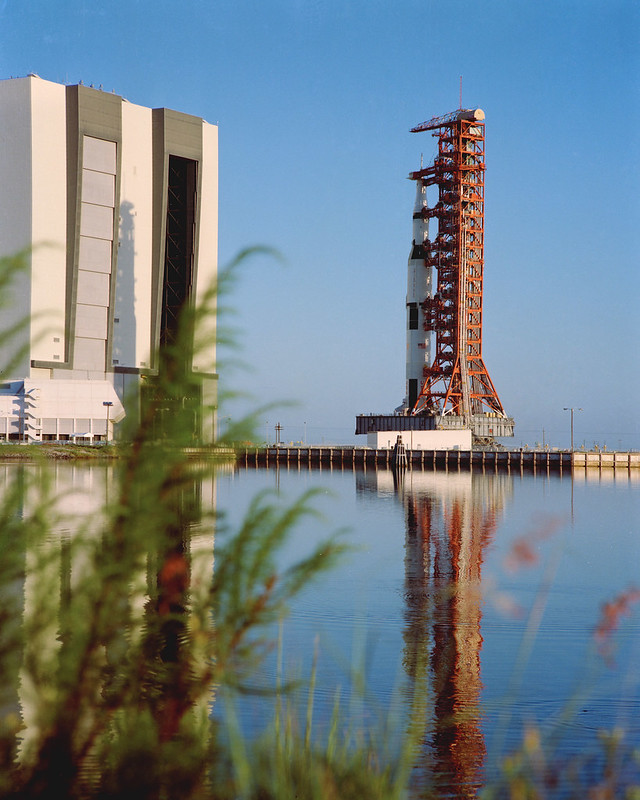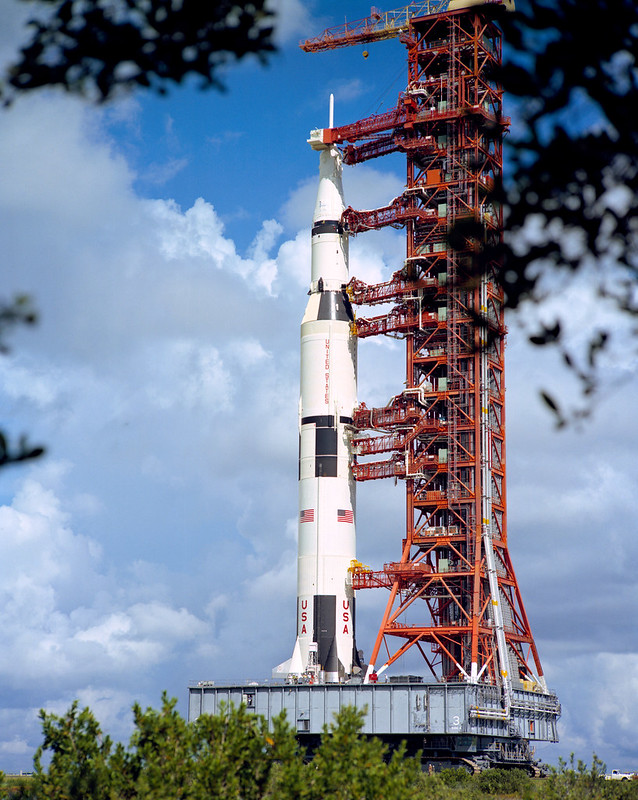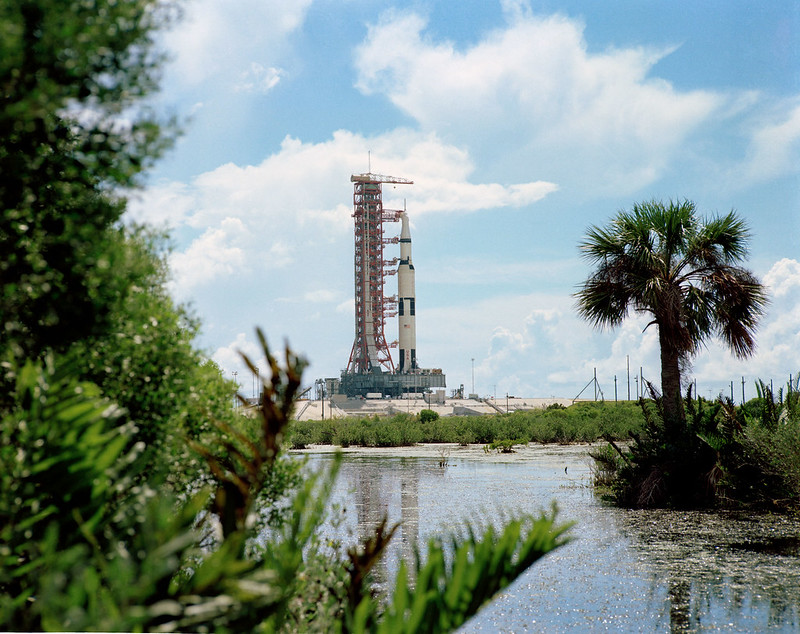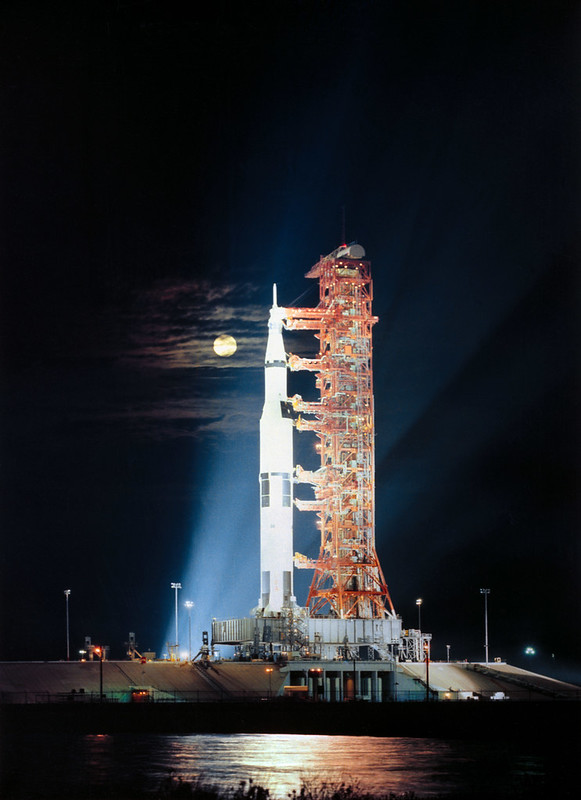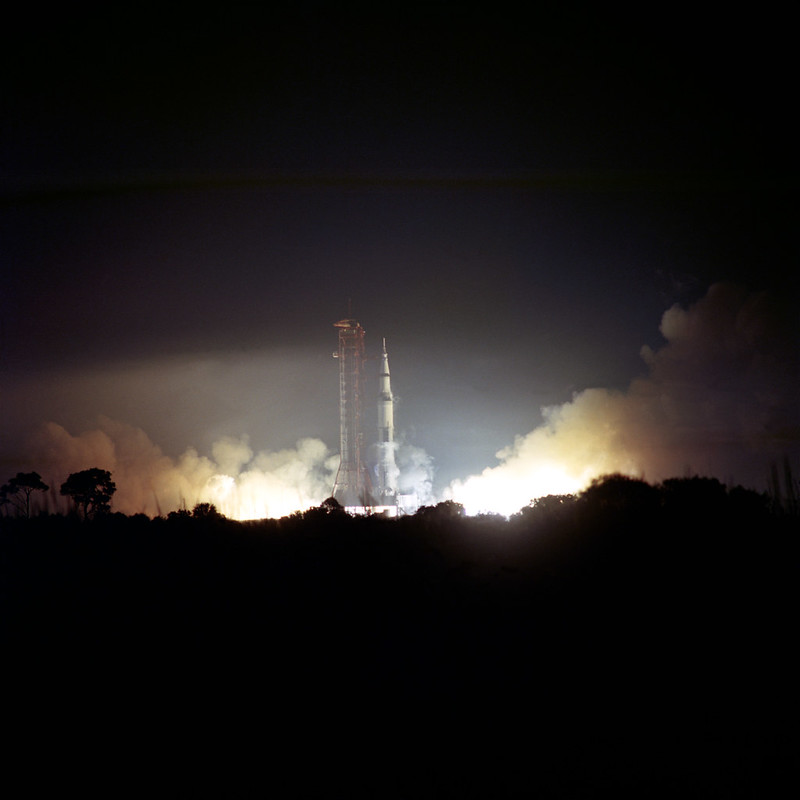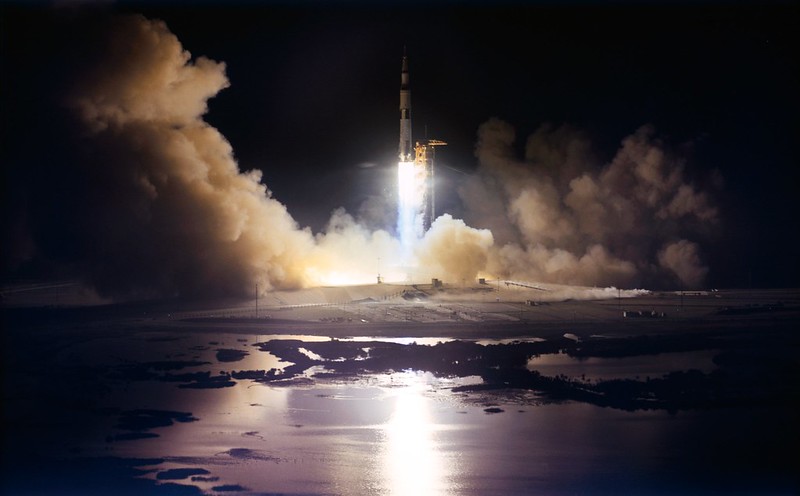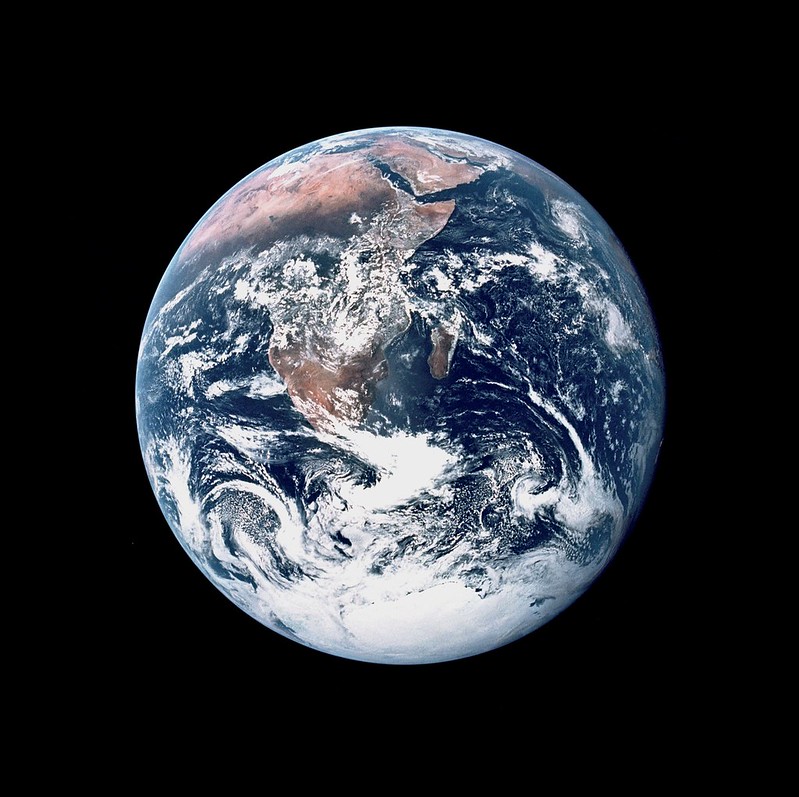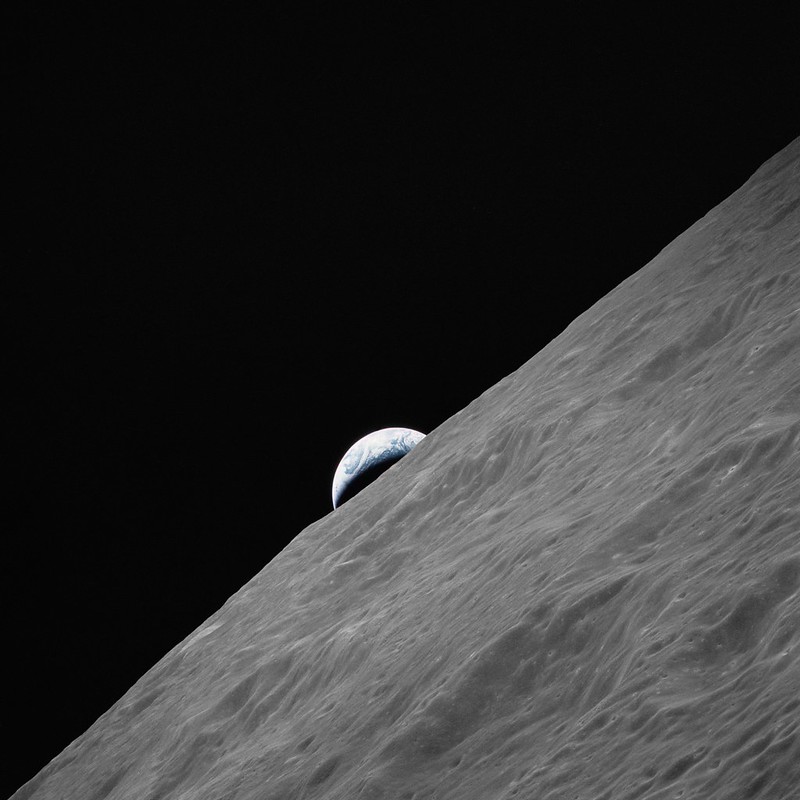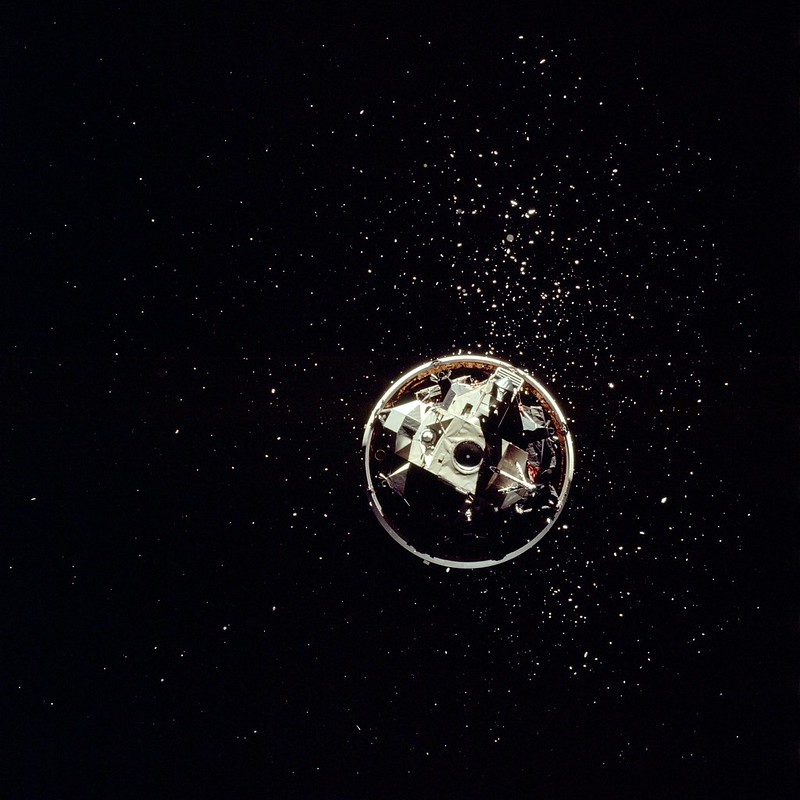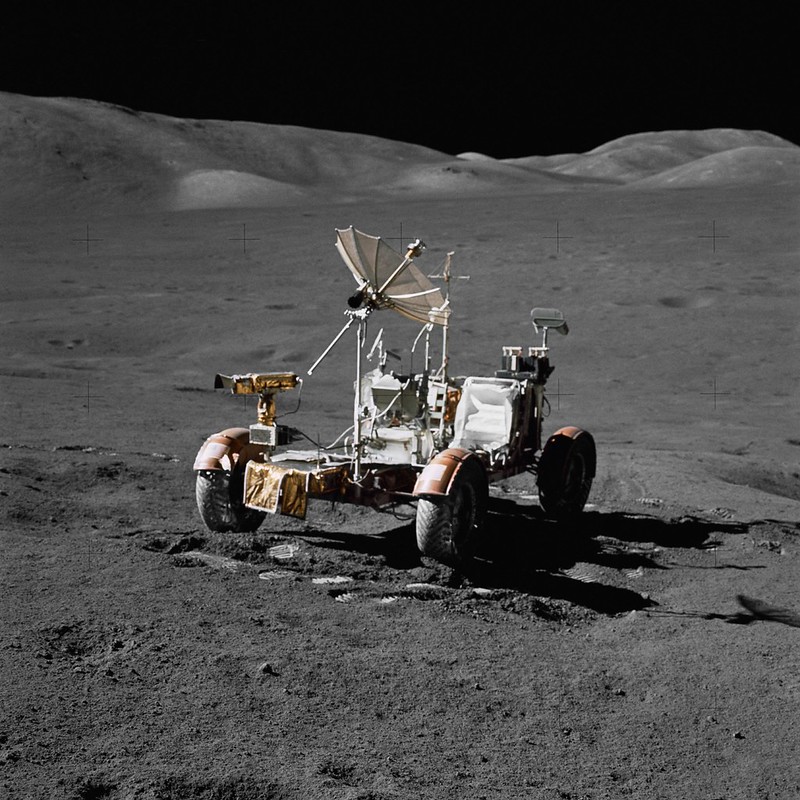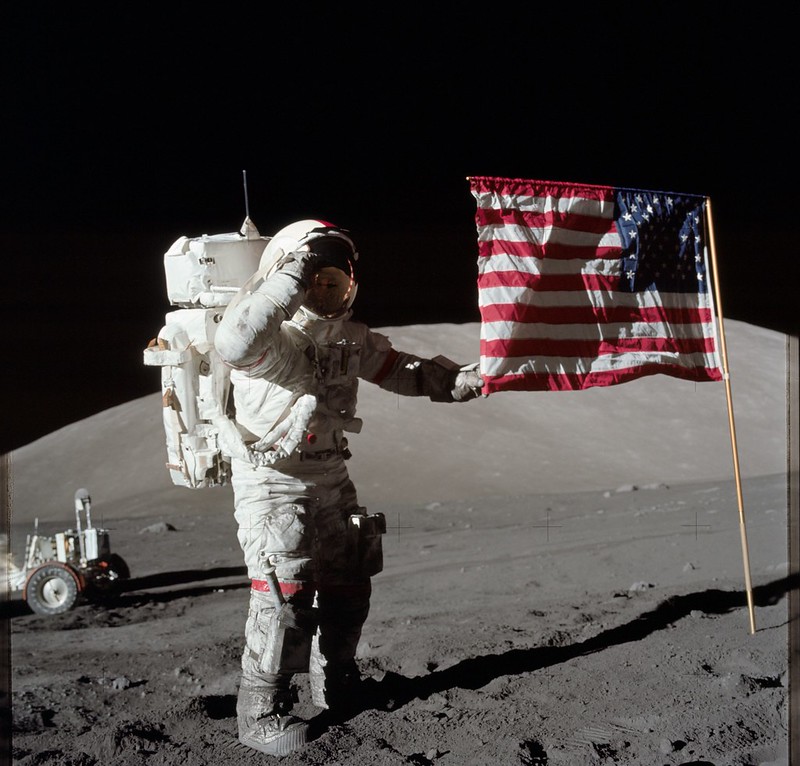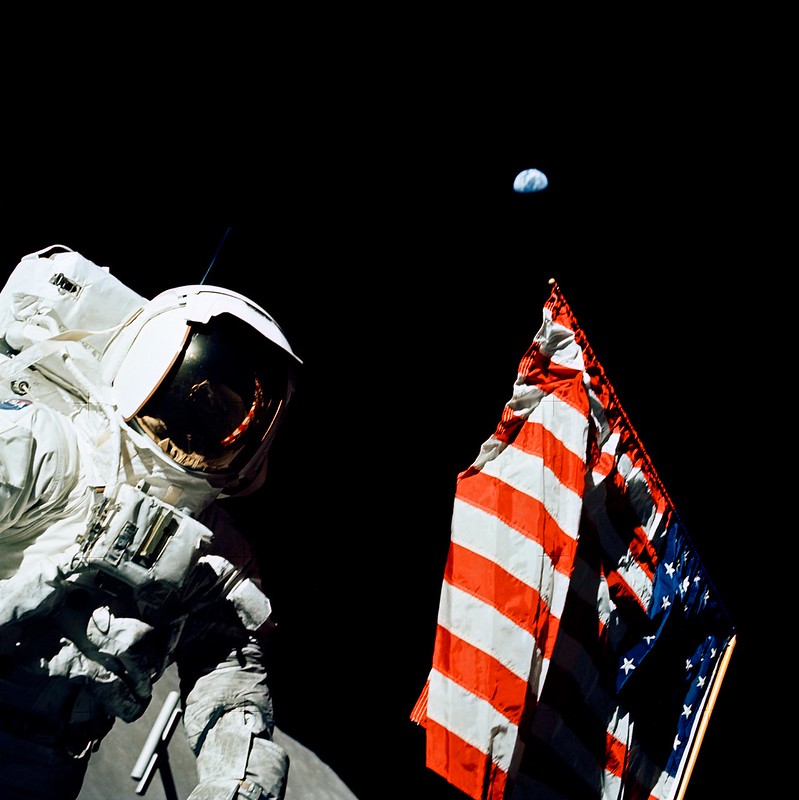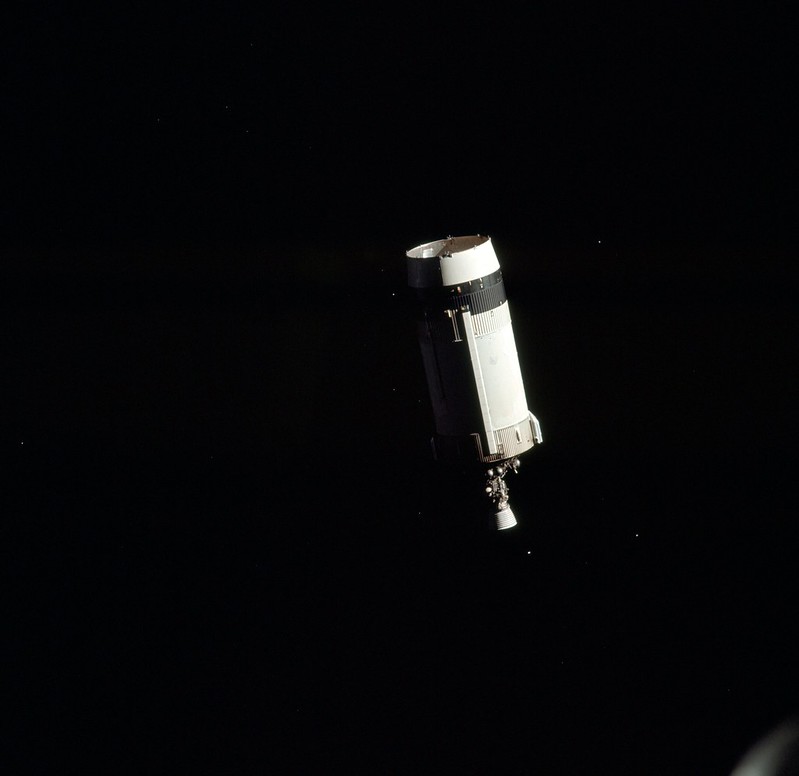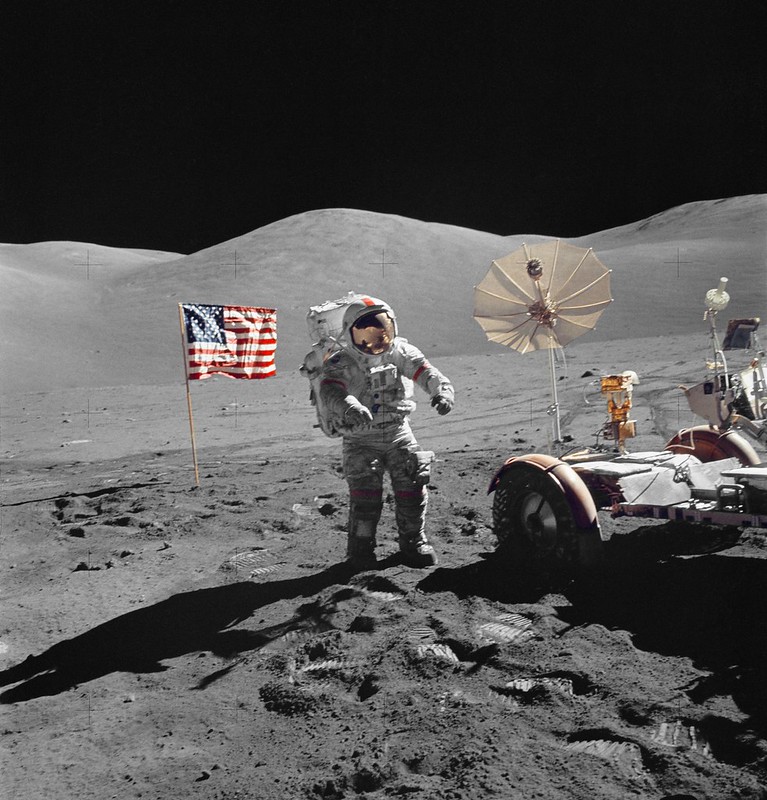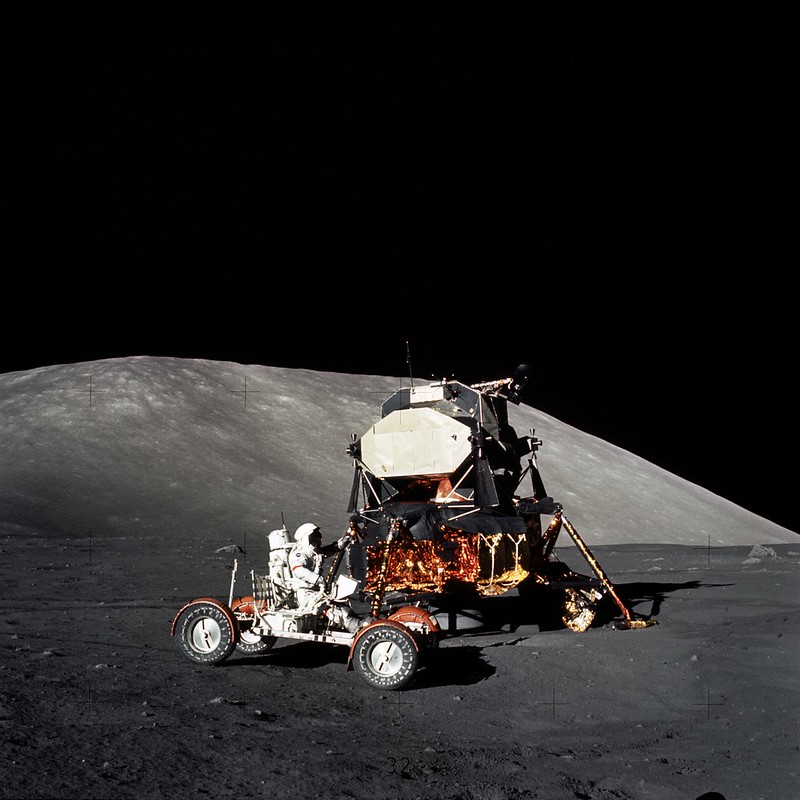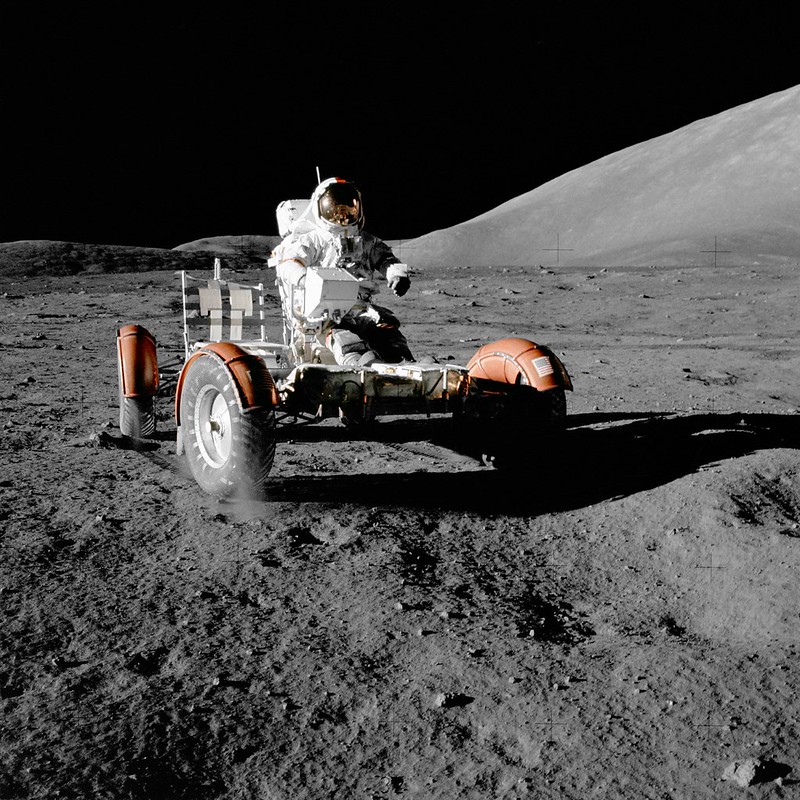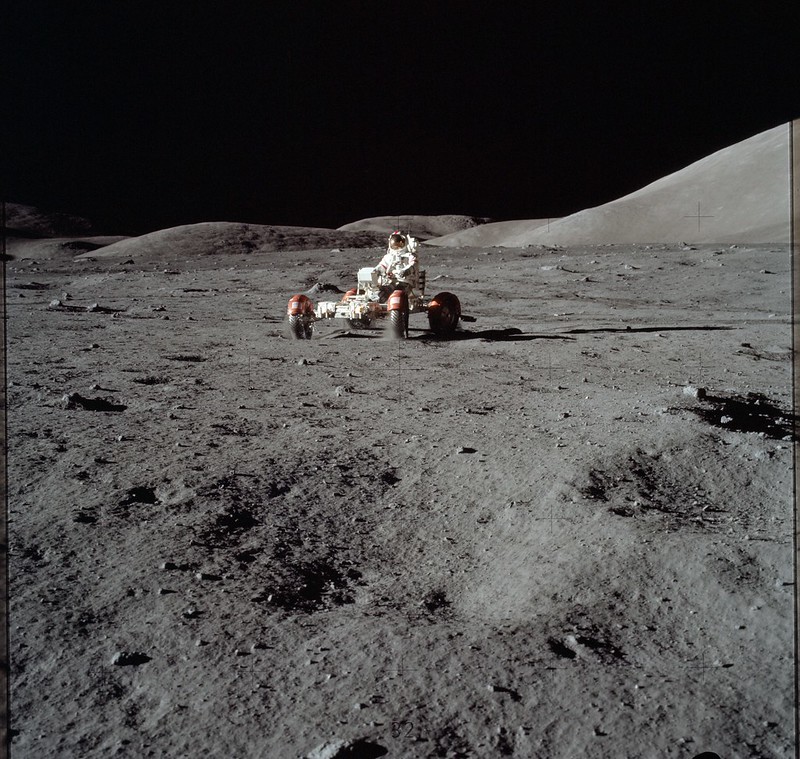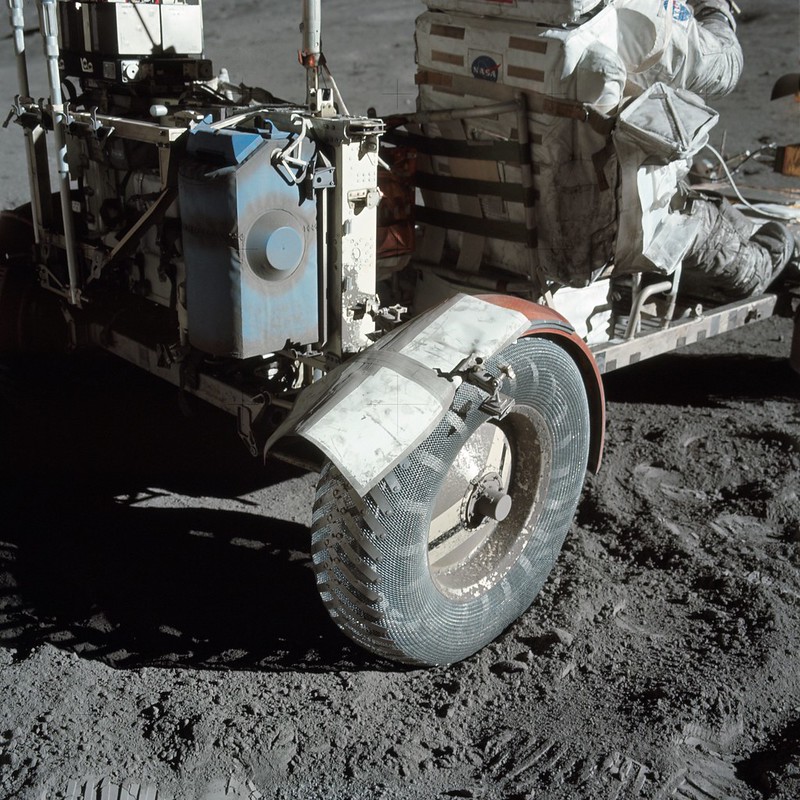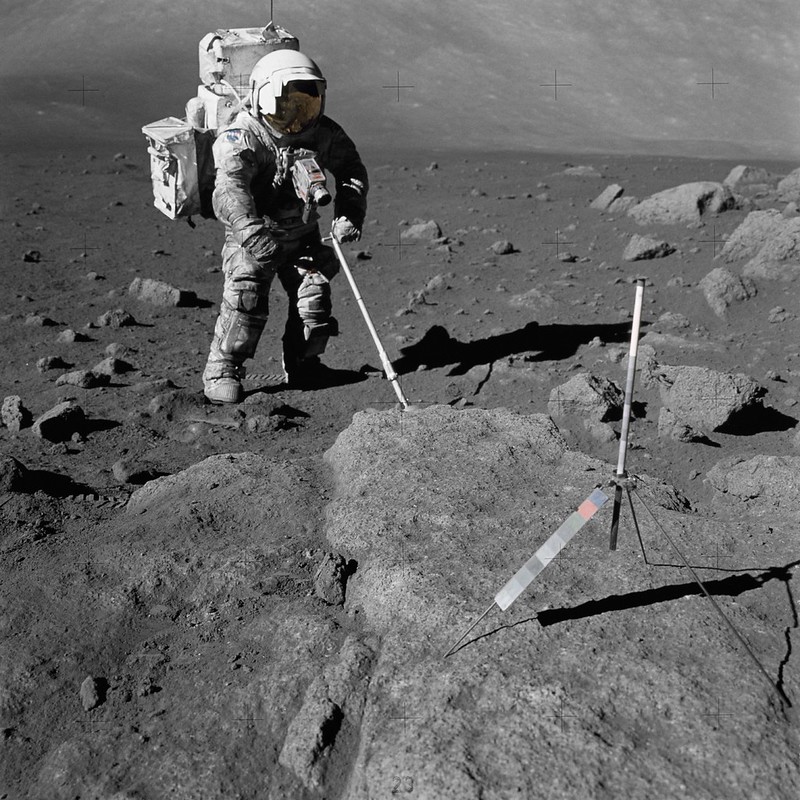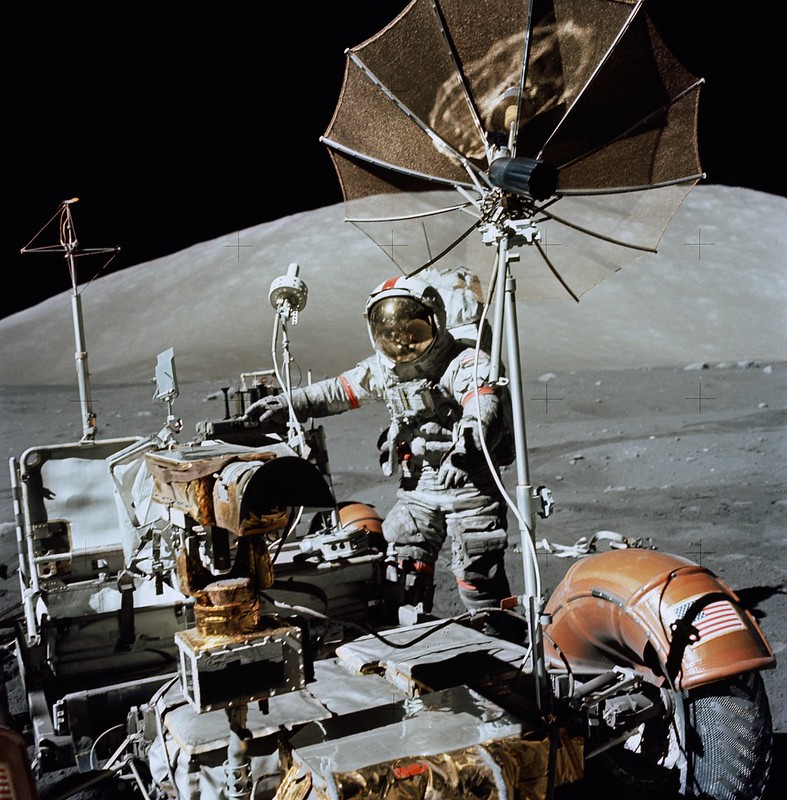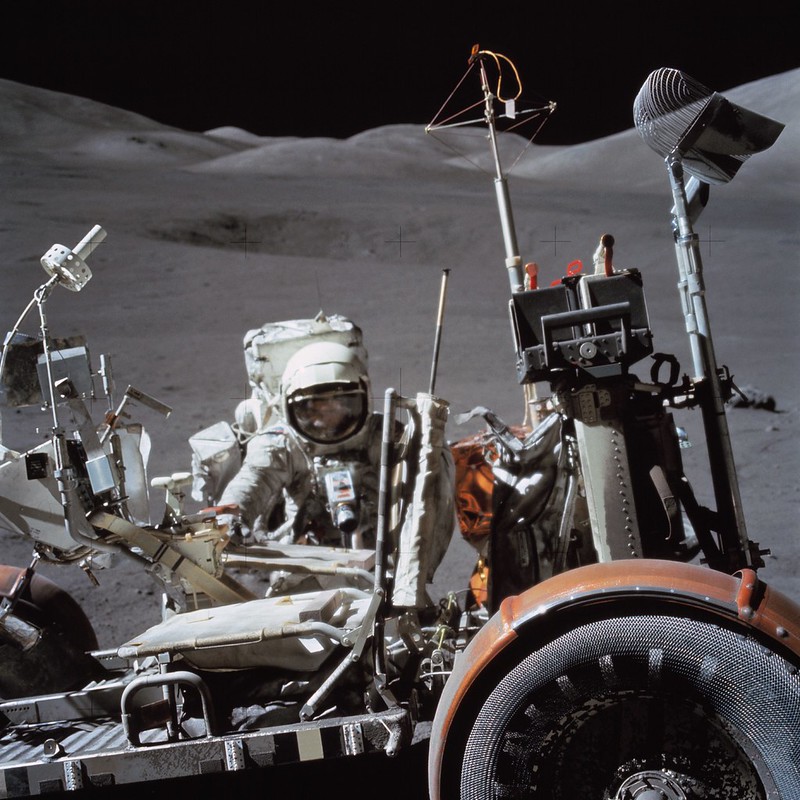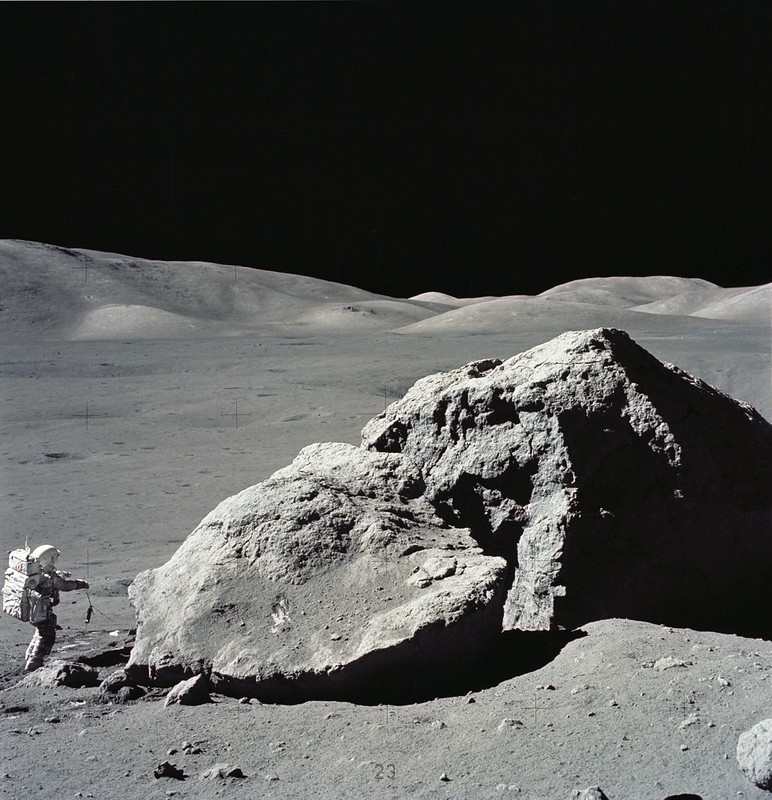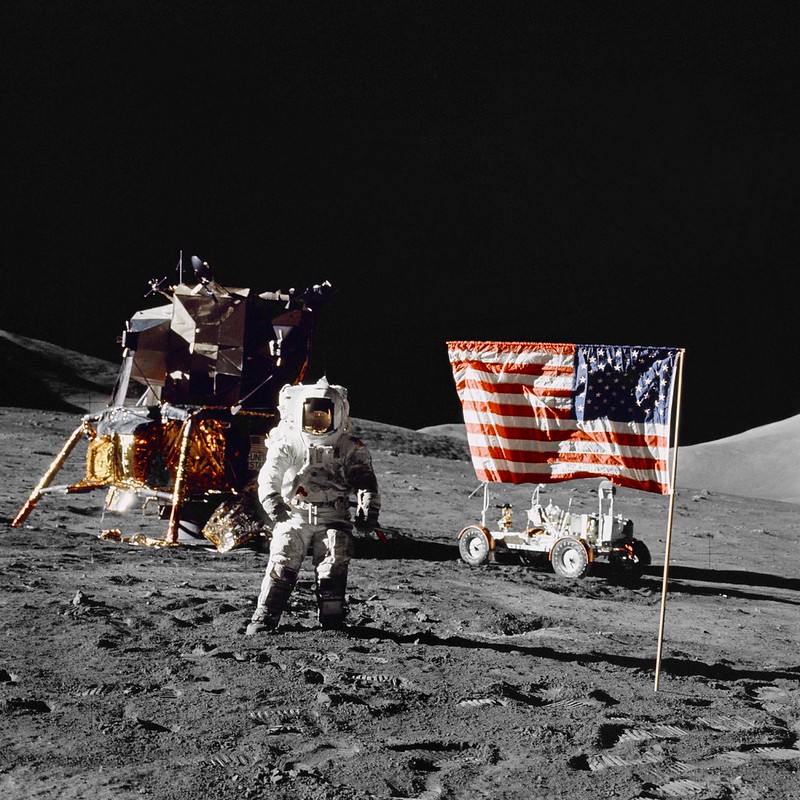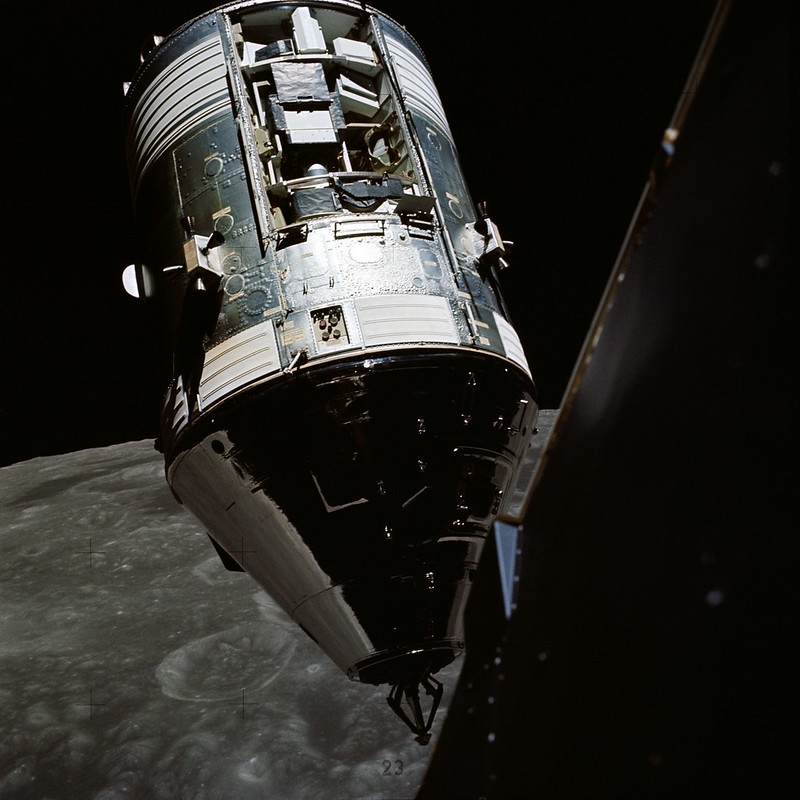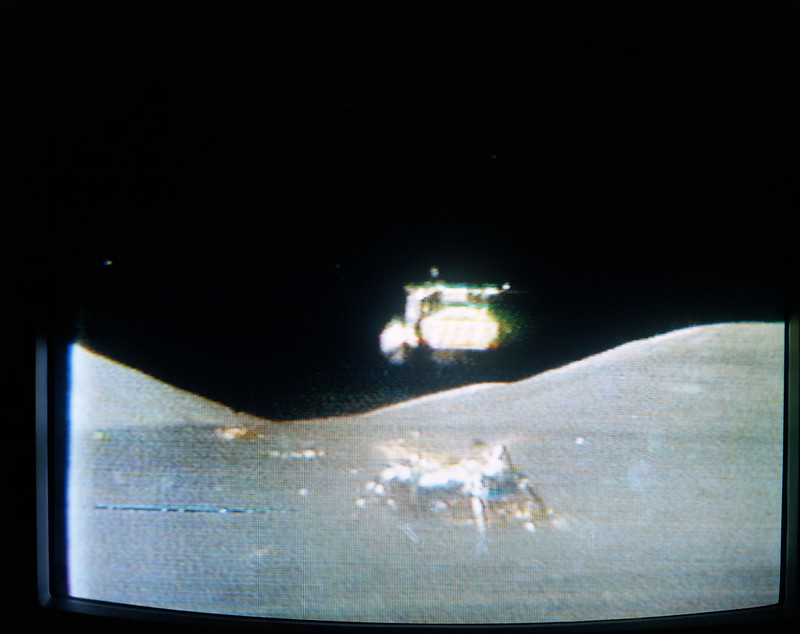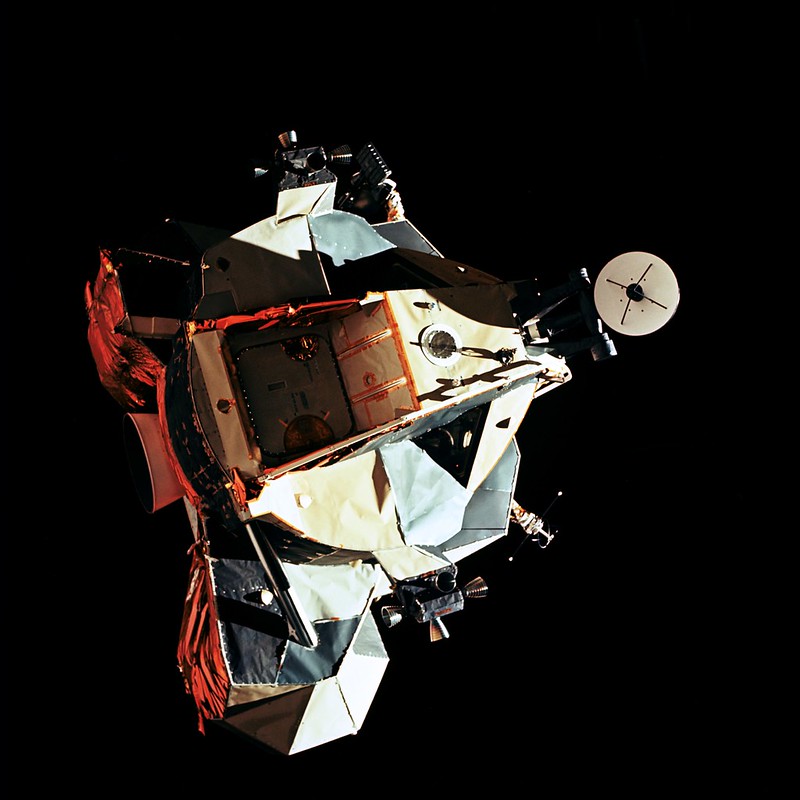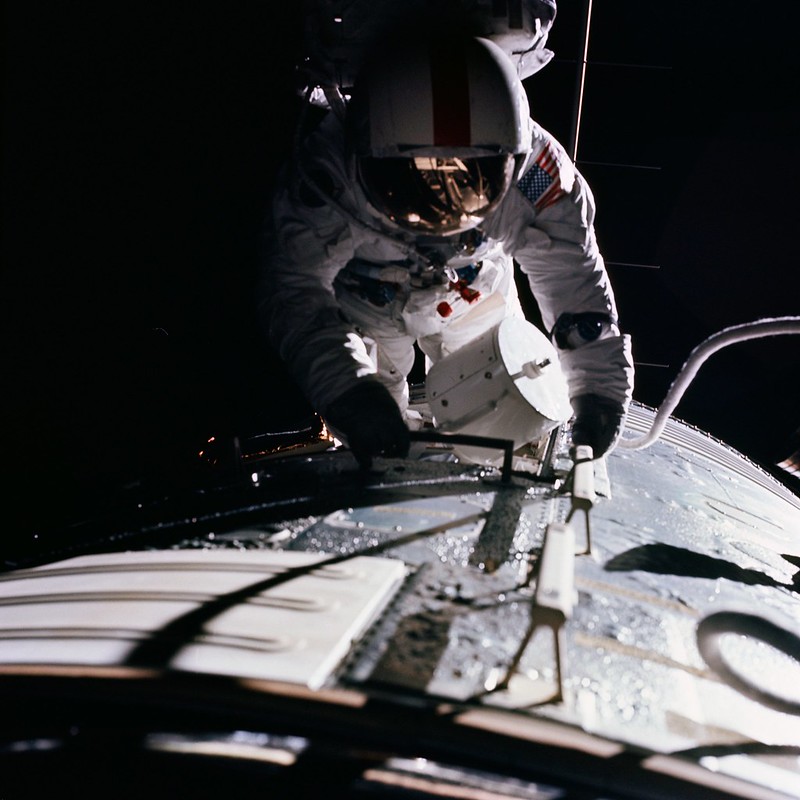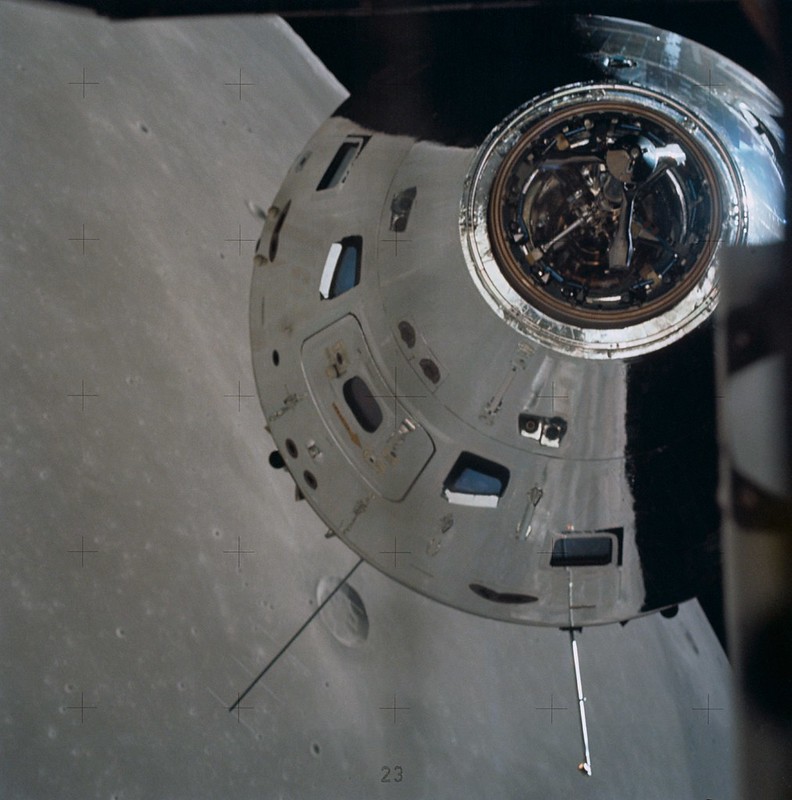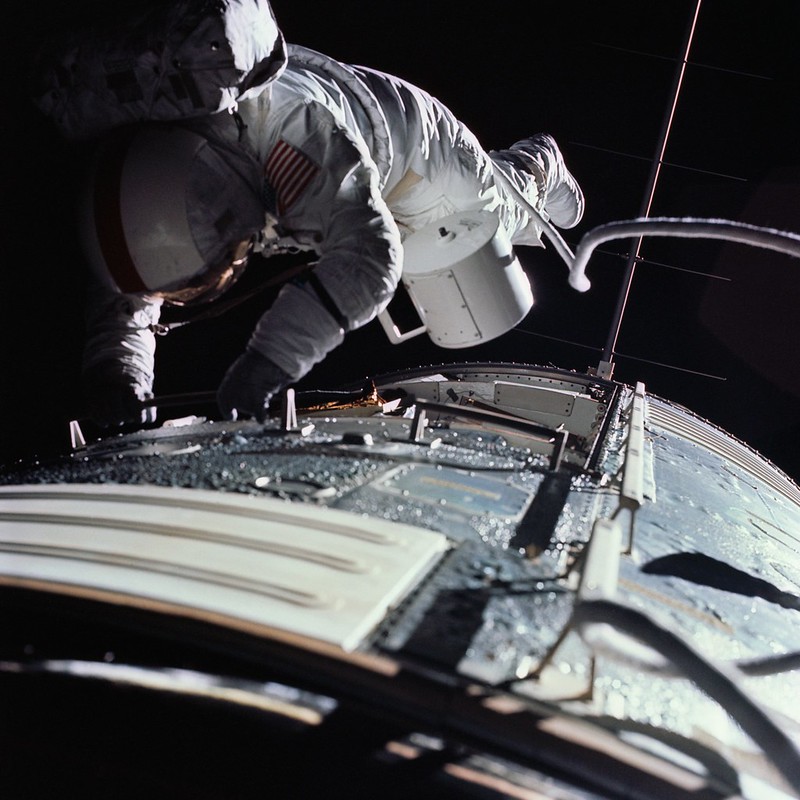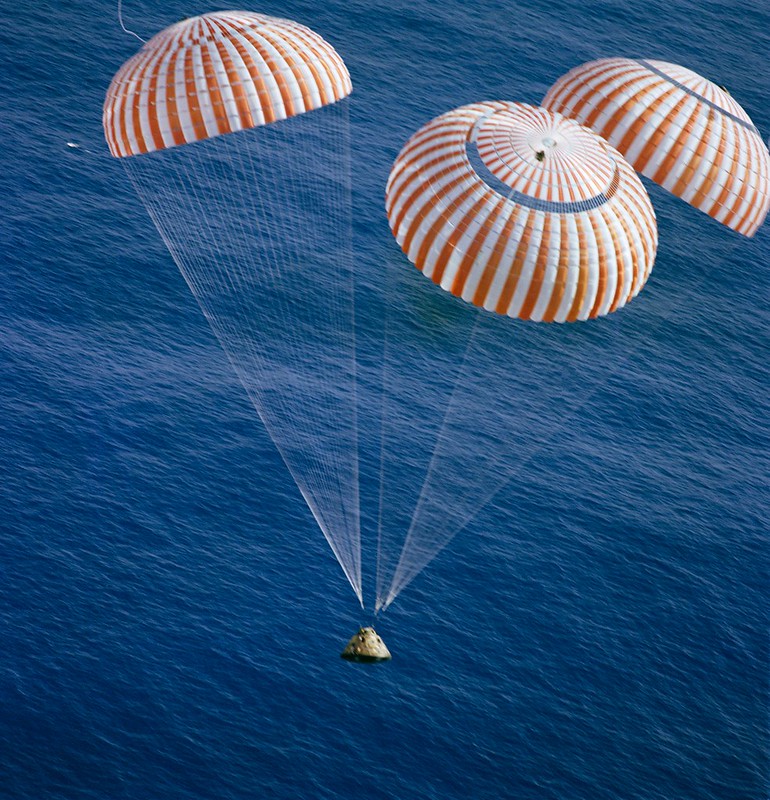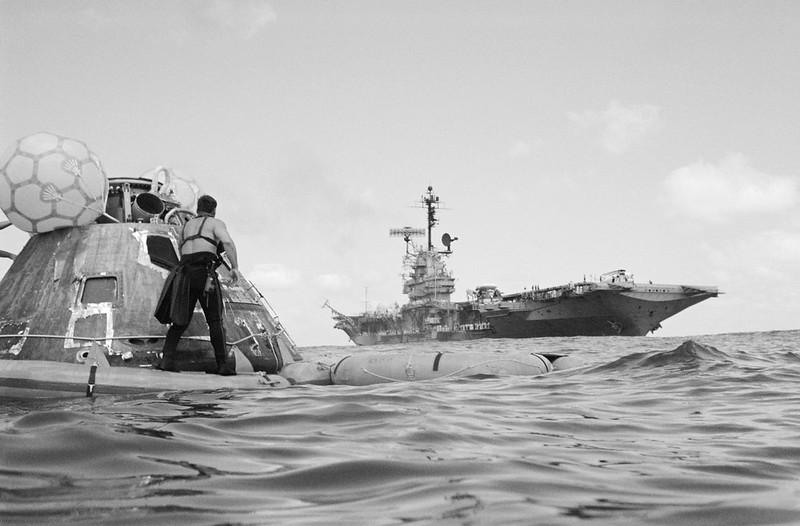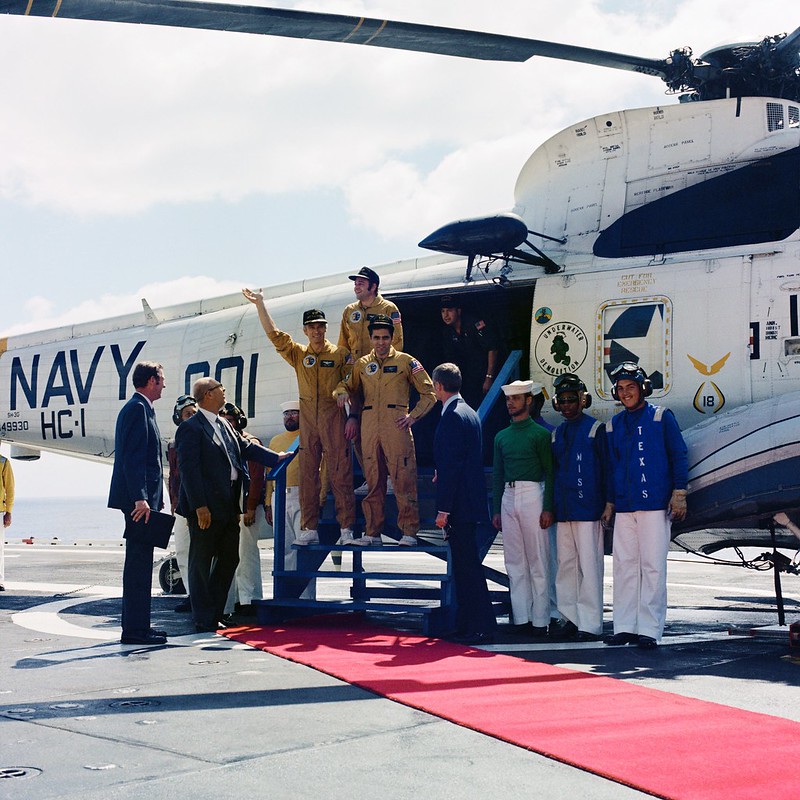Apollo 17 Fact Sheet
By Cliff Lethbridge

Apollo 17 (NASA Code: AS-512/CSM-114/LM-12/LRV-3)
Launch Date: December 7, 1972
Launch Time: 12:33:00 a.m. EST
Launch Site: Launch Complex 39, Launch Pad 39A
Launch Vehicle: Apollo-Saturn V AS-512
Command Service Module: CSM-114
Command Module Nickname: America
Lunar Module: LM-12
Lunar Module Nickname: Challenger
Crew:
Eugene A. Cernan, Commander
Ronald E. Evans, Command Module Pilot
Harrison H. Schmitt, Lunar Module Pilot
Back-up Crew: Young (CDR), Roosa (CMP), Duke (LMP)
Mission Duration: 12 Days, 13 Hours, 51 Minutes, 59 Seconds
Number of Lunar Orbits: 75
Recovery Date: December 19, 1972
Recovery: U.S.S. Ticonderoga (Pacific Ocean)
Mission Summary:
The final Apollo flight to the Moon was launched about 2 hours, 40 minutes late due to a technical difficulty during the countdown.
Engineers needed to bypass an electronic interlock mechanism by a jumper cable after the interlock would not allow launch operations to continue after the Saturn V second stage liquid oxygen tank was manually ordered to be pressurized.
The launch vehicle’s computerized Terminal Countdown Sequencer had failed to pressurize the tank automatically as intended. The resulting electronic glitch and resolution pushed back the launch until after midnight.
This was the first U.S. manned launch in darkness, and the huge Saturn V rocket treated viewers to what has arguably remained the most spectacular launch in the history of the U.S. space program.
The flight to the Moon went according to plan, and the Lunar Module (LM) Challenger landed in the Taurus-Littrow Valley on the Sea of Serenity at 2:55 p.m. EST on December 11, 1972. The landing occurred about 300 feet from the target landing site.
This particular landing site was selected because a landslide had recently been known to occur, bringing lunar material from the heights of the nearby Taurus Mountains close to the landing area. The site was also thought to be close to apparent volcanic activity.
As was the case during Apollo 16, the first steps onto the Moon were not televised. In this case, however, the lack of television coverage was planned. The camera equipment necessary to televise the first lunar steps was not carried to the Moon in order to conserve weight.
The first of three Moonwalks lasted 7 hours, 12 minutes. Astronauts Cernan and Schmitt planted a U.S. flag which had hung in Mission Control since Apollo 11. They also deployed the Advanced Lunar Science Experiment Package (ALSEP), the most advanced ALSEP of the Apollo program, and used the Lunar Roving Vehicle (LRV) to make a lunar excursion to Steno Crater.
The second Moonwalk lasted 7 hours, 37 minutes. This was the longest Moonwalk of the Apollo program, during which the astronauts used the LRV to make a lunar excursion to South Massif. The total distance driven by the LRV during this excursion was 11.8 miles, which also established a record for the Apollo program.
The third Moonwalk lasted 7 hours, 16 minutes. The astronauts used the LRV to make a lunar excursion to North Massif. This was the final Moonwalk of the Apollo program.
Although the Apollo 17 astronauts completed the last Moonwalks in the Apollo program, these were certainly not the least, as most records set during the course of the Apollo program were broken.
These records included the first flight of a NASA scientist-astronaut. Astronaut Schmitt was a geologist, and the first U.S. astronaut to participate in a manned space flight without being drafted by NASA as a pilot.
In addition, several records were broken on the Moon. The Apollo 17 LM and crew logged the longest stay on the Moon at 74 hours, 59 minutes, 38 seconds. The Apollo 17 Command Service Module (CSM) completed the most lunar orbits at 75, setting a record manned lunar orbit stay of 147 hours, 48 minutes.
Astronauts Cernan and Schmitt performed the longest single lunar surface excursion at 7 hours, 37 minutes, 22 seconds. They also logged the longest total excursion time on the Moon at 22 hours, 5 minutes, 4 seconds.
And, the last Apollo LRV completed the longest single LRV trip at 11.8 miles. The Apollo 17 LRV also logged the most distance driven on the lunar surface at a total of 21.75 miles.
Finally, a record 253 pounds of lunar rock and soil samples were collected and returned to Earth.
Challenger became the last LM to lift off the Moon at 5:54 p.m. EST on December 14, 1972.
During the return trip to Earth, astronaut Evans completed a spacewalk which lasted 1 hour, 7 minutes. Evans, who remained connected to the CSM by a 23-foot tether, made three trips to and from the Scientific Instrument Module (SIM) bay attached to the CSM Service Module (SM).
Evans retrieved film cartridges from the SIM and floated free for a time. This was the last spacewalk to date performed in deep space.
The return to Earth, splashdown and recovery were nominal.
Apollo 17 was not originally intended to be the last Apollo flight to the Moon. As a severe economic recession dawned and public interest in the lunar missions waned, lunar missions already designated Apollo 18, Apollo 19 and Apollo 20 were canceled.
SELECTED NASA PHOTOS FROM APOLLO 17
